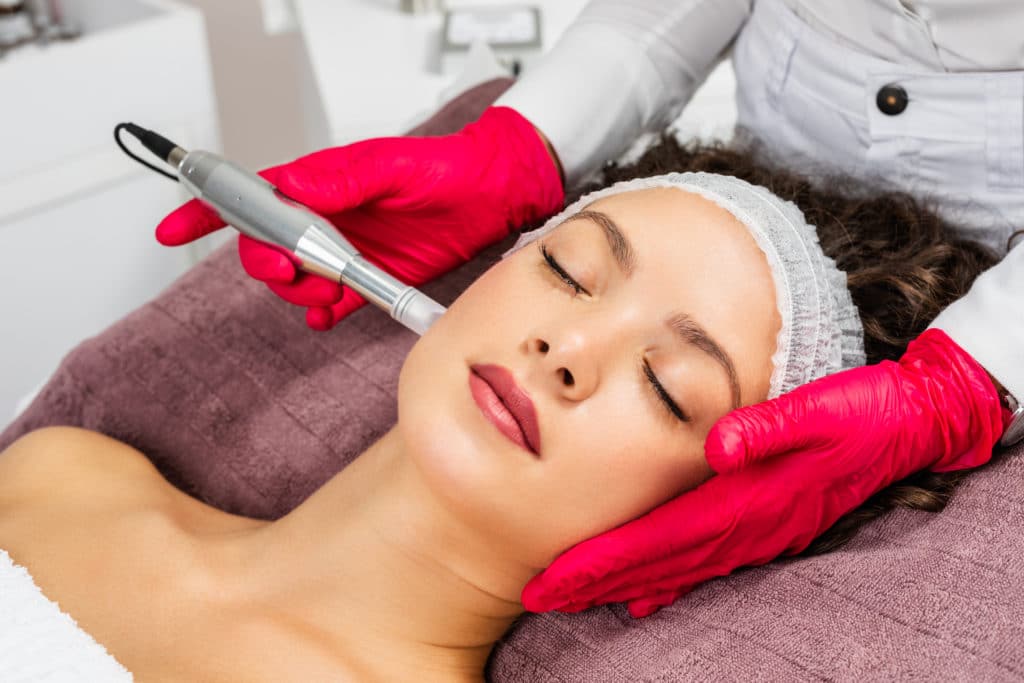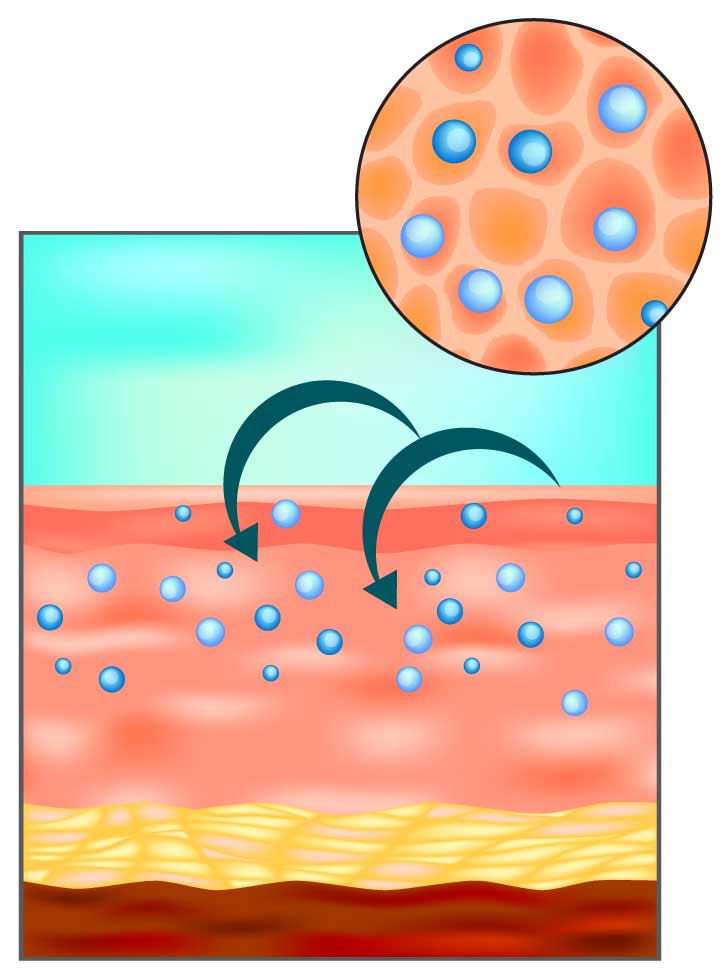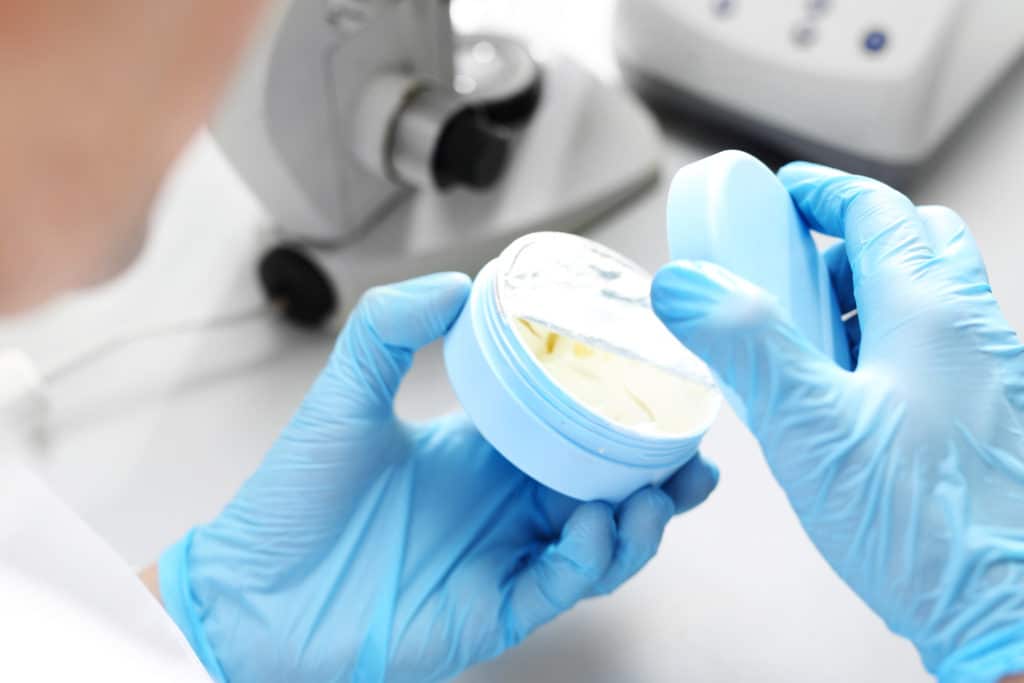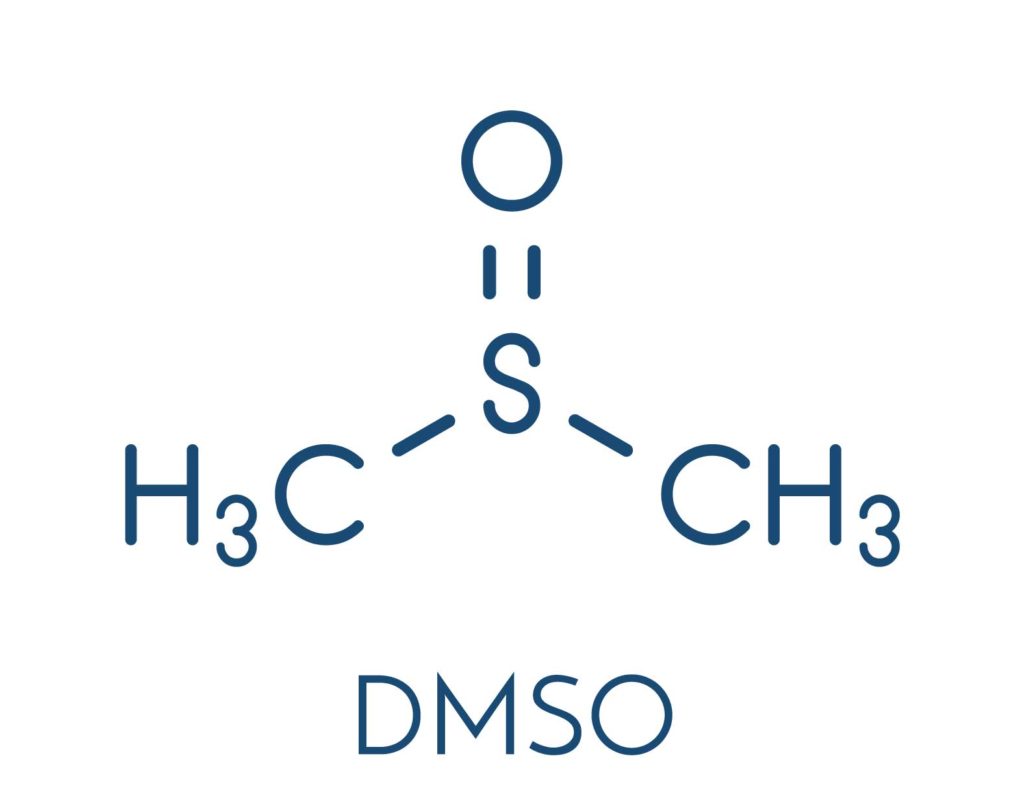Best Microneedling Numbing Cream
Best Numbing Cream for Microneedling

Here are some of the key attributes that the best topical numbing creams will all have:
- Rapid-onset
- Highly effective
- Creamy, smooth texture for easy application and removal
- Absence of gritty, oily, waxy or flaky residue
- Aseptic packaging – such as single-use, sanitary packets
- Safe
- Cost competitive
- Convenient
Packaging that allows clinical flexibility
Numbing Cream Skin Penetration

The strength and effectiveness of any numbing cream will be determined by it’s ability to effectively penetrate the skin. More specifically, for microneedling numbing creams, we are interested in the safe and effective delivery of active pharmaceutical ingredients (API’s) like lidocaine and benzocaine through the skin.
The outermost layer of the skin, the stratum corneum, is the main barrier for anesthetic drug penetration. However, topical numbing creams can be formulated in a way that improves their ability to penetrate through the stratum corneum and other skin layers. This type of penetration enhancement technology is often referred to as a “transdermal delivery system.”
Transdermal Delivery Systems

Formulating a numbing cream with an effective transdermal delivery system will help successfully deliver API’s like lidocaine and benzocaine into the dermis, resulting in improved numbing onset speed and depth of penetration. There are many safe and effective penetration enhancing agents available to both compound pharmacies as well as over-the-counter (OTC) monograph and Rx drug manufacturers. One safe and effective transdermal delivery system consists of fatty acids, urea, MSM and glycols, such as ethoxydiglycol and propylene glycol.
DMSO Numbing Creams

One somewhat common chemical enhancer which is known to be effective in terms of rapid delivery is Dimethyl Sulfoxide (DMSO). DMSO is a universal solvent used by many drug suppliers, both human and veterinary, to rapidly transverse the barrier layer of the skin, which is made up of both fatty and keratinoid (protein) structures. While DMSO is effective at penetrating the skin, it also has the ability to denature proteins, which can be very problematic. When choosing a topical anesthetic product for microneedling, it’s important to understanding the mechanisms and risks of the included penetration enhancers to help reduce the risk of unwanted side effects.
Numbing Cream pH Risks
Appropriate pH as a factor when searching for the best microneedle numbing cream. Many of the prescription and OTC numbing creams on the market have significant drawbacks associated with their use in minor cosmetic procedures due to inappropriately pH levels.
A high pH (alkaline) e.g. EMLA cream pH 9.0-9.2 (a product with a pH much above 8.0) may pose significant risk to the patient if used on the face anywhere near the eye. Additionally, products with this high of a pH may also be disruptive to the cellular functioning (healing) of the dermis and supporting structures if used prior to skin penetration procedures.
A pH scale which is most often described as a range between 0-14 is a logarithmic measurement of hydrogen ions H+ and the scale provides us the indication of acidity or alkalinity of a liquid, a pH of 1 having very toxic acidity (acid) and a pH 14 having very toxic alkalinity (caustic), distilled water is neutral with a pH around 7.
Because it is a logarithmic scale each whole number increment above or below 7 is; 10 times as acidic (when below 7), or 10 times as alkaline (when above 7) e.g. a pH of 3 is 10 times as acidic as a pH of 4, and a pH of 12 is 10 times as alkaline as a pH of 11. Each incremental change of 0.1 on the pH scale represents about a 26% increase in the acidity or alkalinity of the solution as you move away from the neutral point at 7.0 on the scale.
When choosing a numbing cream for microneedling, keep in mind that even small changes in pH can have dramatic changes in the potentially damaging acidity or alkalinity of a product being applied to the skin; especially one that may accidentally enter the eye. The human eye is extremely sensitive to even slight changes in pH. Due to the risk to the human eye, a topical anesthetic that is used anywhere on the face should be in the pH safe region and definitely not outside of the irritant zone indicated below. There are cases within the medical literature where chemical injury to the eye has occurred due to the use of alkaline topical anesthetics near the eye.
Even if a topical anesthetic is pH safe, if it is to be used on the face then great care should be taken to ensure the anesthetic does not enter the eye because if the eye surface becomes anesthetized then a corneal abrasion could easily occur inadvertently without the patient becoming aware.
Numbing Cream Safety
Even when working with a topical numbing cream that is DMSO-free and pH safe, its important to keep the following considerations in mind while working with microneedling patients:
- Application surface area – smaller areas may be easier to achieve effective anesthesia than larger areas. If possible, large areas should always be segmented and treated a small segment at a time in successive sessions with at least 24 hours between sessions, so as to reduce the risk of causing a toxic blood serum level that could occur when treating large area of skin. This even applies if you if you are using products containing low concentrations of anesthetic API’s.
- The common pain sensitivity of the involved application surface area.
- The pain threshold of the client/patient.
- Pre/co-existing pain – existing medical conditions that cause pain will have the tendency to increase sensitivity to any new sources of pain and the patient may also exhibit reduced efficacy for pain relief if they have been on long term analgesia.
- Menstrual status (for female patients) – menstruating female patients may have a general heightened sensitivity to pain.
- The mental state of the patient – feeling rushed, being being anxious, stressed or emotionally upset may all tend to heighten the client/patients sensitivity to pain.
- The technique and manner of the technician – as with any procedure a technician who is both skilled and who projects calm confidence when interacting with the client/patient will help to reduce their overall anxiety about the intended procedure.
The safe and appropriate use of topical anesthetics can be a very valuable tool in improvement of patient comfort and procedural outcome. Using good judgment and discretion when choosing and using the best microneedle numbing cream can allow for the best outcomes while mitigating any associated risks.
Interested in Purchasing our Products?



